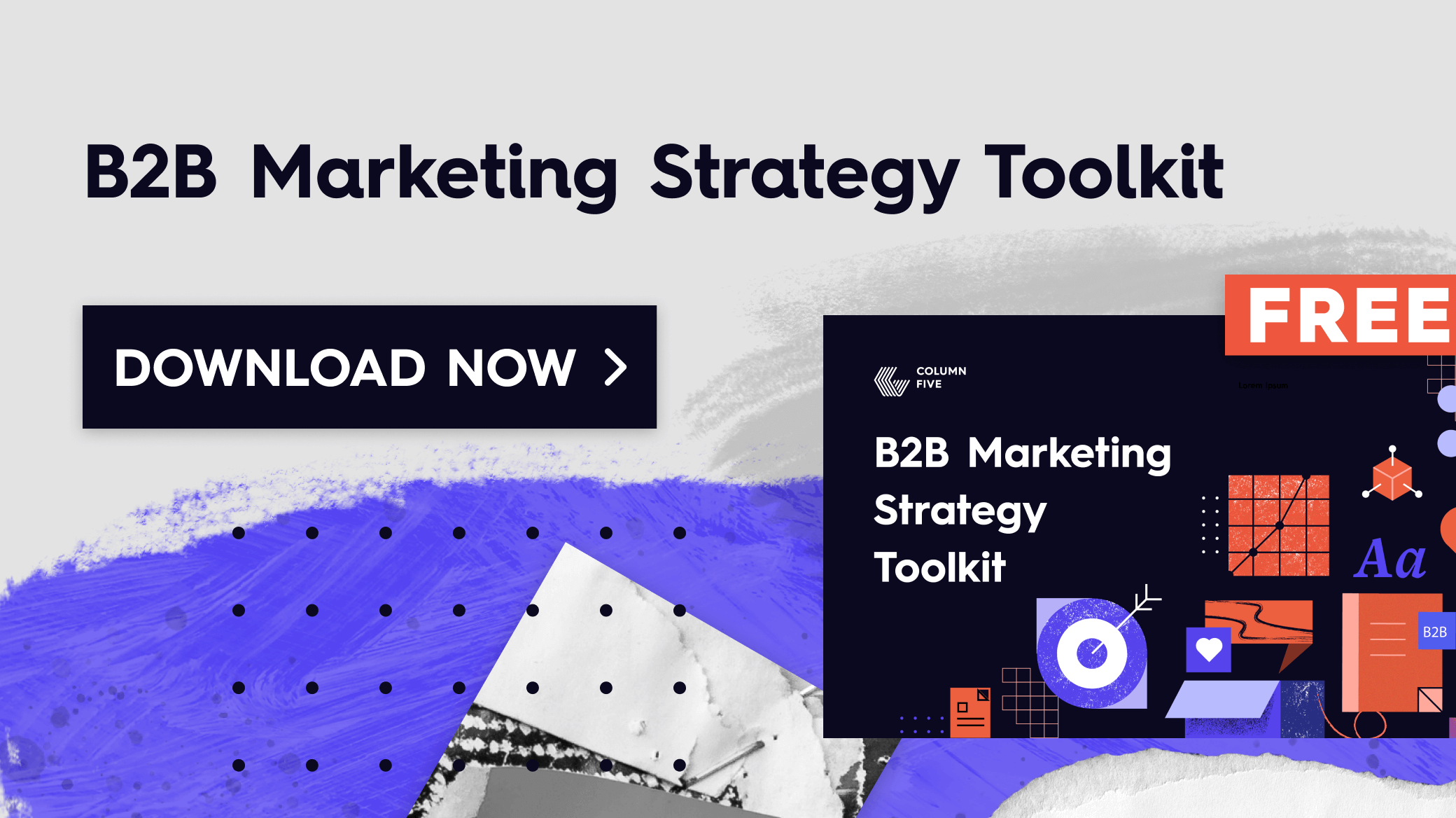If you want to differentiate yourself from competitors, you need to invest in one thing: your brand. With an instantly recognizable SaaS brand, you can stand out, tell unique stories, and capture the audience you want. But what exactly does that look like, especially in the crowded tech space?
A strong brand is the key to win your market.

How to Make Your SaaS Brand Stand Out
Today, we’re diving into the key elements your brand needs to outshine your competition and make a memorable impression.
1) Choose a strong name.
When most people think of branding, they think of logos. Thus, by the time many brands start thinking seriously about their “branding,” they’ve already landed on their name. (If you already have a name, skip to the next section.) If you’re building from scratch, however, or undertaking a massive rebrand, choosing the right name is the first crucial step to differentiate.
What makes a good name?
- It’s easy to read, pronounce, and remember. People have very limited attention spans. Don’t make them work to decipher your name.
- It’s on the shorter side. This is especially important to consider if your wordmark will be used across different platforms. The longer and more complicated it is, the more challenging it is to use/design around.
- It’s available. This is the biggest challenge in naming a SaaS brand. Beyond the legalities of trademarks, you want to make sure everything from social handles to URLs are also available. Pro tip: Even if digital names are available, think about how your name might translate as a URL or social handle. For example, something like Funta Co. might read as @funtaco in a handle. (Fun taco, anyone?)
And, of course, you need a name that is significantly different than any existing competitor. The only thing worse than being ignored is being mistaken for a competitor. For more, see our tips to find the right brand name.
2) Create a strong verbal identity.
The way you write, speak, joke, communicate, and talk about your brand is a core part of how your brand shows up in the world. If you don’t have a strong voice, perspective, or story, you will not only not stand out but you may be completely ignored. (That said, plenty of SaaS brands are still writing in bland corporate speak. This means your personality is a huge opportunity to make a splash.)
How do you create a verbal identity that makes you stand out?
- Identify your Brand Heart. Articulating your core beliefs can help you connect with like-minded folks who are attracted to your brand. Use our free template to find your Brand Heart and tell stories about it.
- Identify your voice and personality. These elements can be hard to define, but you need a clear sense of who you are, as well as brand guidelines to help you create interesting, engaging, and consistent content that reflects your identity. If you’re stuck, answer these questions to find your voice and define your personality.
- Articulate who you are, what you do, and who you do it for. Clearly and simply define your product/service, value prop, target personas, and key selling points/story pillars. When you can articulate this language in simple but impactful language, you can communicate instantly and effectively. Try our free template to build your brand messaging framework and tell consistent stories across touchpoints.
- Share a perspective that provides value. There is a ton of noise in the marketplace, and most people are saying the same thing. You can notably stand out by planting your flag in the ground and making a strong statement that is:
- Unique. What value/insight/perspective are you adding to your industry that your competitors aren’t?
- Controversial. If you’re playing it safe, you’re probably not saying something new. You don’t have to shock people, but taking a contrarian or edgy stance can help you stake your claim in the market. It will certainly grab attention and, even better, it will help you find your people.
- Consistent. Share your perspective often. The more consistent your messaging is, the more impactful it will be.
If you want to know more about our perspective, find out why we say you should stop creating content.
3) Grab attention visually.
When most people think of differentiating through branding, they think of a visual identity. This is one of the most powerful parts of your brand identity, but it can only be brought to life successfully once you’ve established the foundational elements in the previous steps. To ensure your brand identity is an honest and accurate representation of your brand—and unique to you—do your due diligence before you dive into full design.
- Start with a thorough analysis of the competitive landscape. Use our template to look at your competitors’ branding, including colors, fonts, logos, etc. You will likely spot similarities and industry trends that might give you a huge opportunity to do something different. (For example, you might notice that every competitor is using a sans-serif font and a red logo.)
- Look at brands you aspire to emulate—outside your space. This doesn’t mean you should copy others outright, but looking to brands that you admire can be a helpful cheat code to hone in on what you like or want to be like (e.g., Nike, Patagonia, BMW, etc.). Do they use specific colors? Do they have an elaborate or simple wordmark? These distinct features may inspire your SaaS brand, too.
- Think of longevity. Before developing or updating a brand, ask yourself if you’ll be happy with this brand in 5 or even 10 years from now. Obviously, most brands go through refinements and updates, but you don’t want this to be the norm or a regular occurrence; it’s difficult to differentiate if you’re always changing.
For more guidance on how to make a visual identity that stands out, download our free brand identity toolkit and find out about the most common brand identity mistakes.
How to Differentiate through Marketing
With a strong brand foundation, you have the tools you need to create unique, interesting, and effective content marketing that stands out. Now comes the hard part: maintaining diligence and discipline as you grow. To continue to outshine your competition, follow these tips.
- Master your basics. To stand out, you need to master your core channels: SEO, Email Marketing, and Search. Set up a solid infrastructure to create content, as well as a distribution strategy to get it in front of the right eyes.
- Focus on originality. What is the value that you, and you alone, can provide to your audience? Create content that serves a core need and they will remember you—and, most importantly, return to you again and again.
- Share your values. Find ways to bring your mission, vision, and brand promise to readers. This is one of the most powerful ways to stand out and pique someone’s interest. Not only is this content emotionally powerful but it can have resonance in a way that product marketing never could. Start with our tips to turn your brand values into interesting content.
- Experiment. Don’t do different things just for the sake of doing different things. (For example, maybe there’s a reason why no one in your industry sponsors podcasts.) But do take educated and calculated risks. For example, what if you stopped using one low-reward social platform and refocused on the surprising-but-more-profitable social channel?
- Dig into your data to find out what is and isn’t working. Alternatively, you might experiment with doing what others do but in different ways. For example, if your competition is taking a spray-and-pray approach to outbound marketing, take a hyper-targeted approach to build out ABM campaigns that have an audience of one or several target clients. Or if your competition is hyper-focused on top-of-funnel metrics and building up their social following, consider some things that don’t scale (e.g., gifting or emails from the CEO).
Ultimately, standing out in marketing is really about telling the most interesting, compelling stories about your brand. See our guide to find and tell your best stories, or turn to expert help if you need help uncovering them. We’d be happy to chat about how we can craft a strategy that will help you win your market with every piece of content you create.





